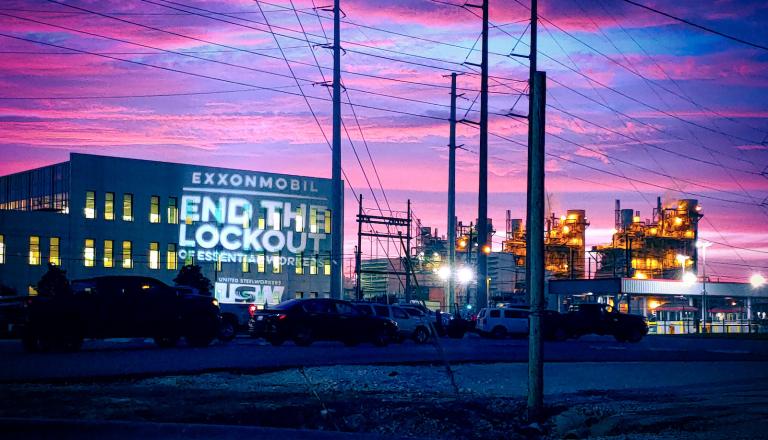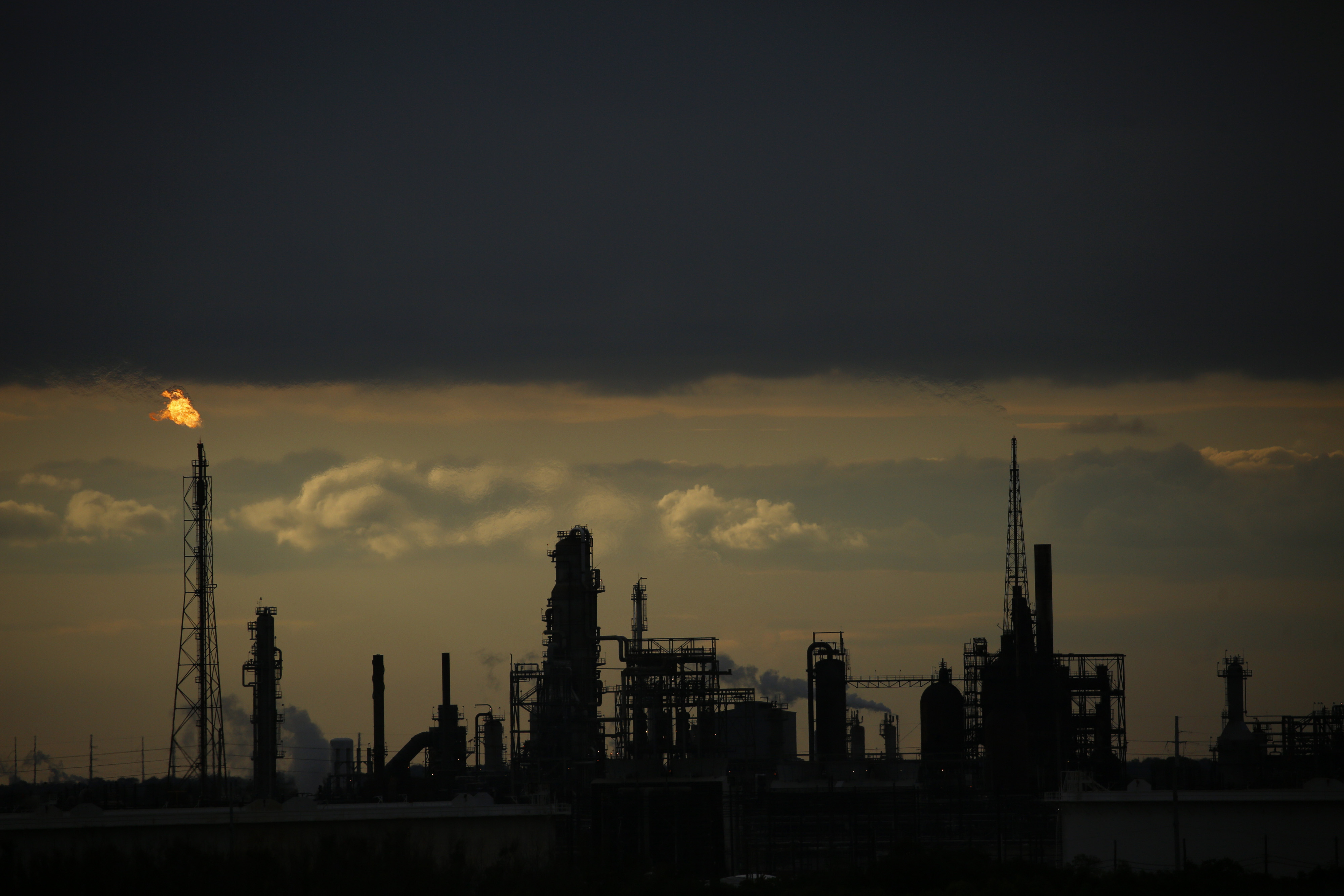When hurricanes hit the Gulf Coast, news of industrial facilities submerged in floodwaters and catching on fire invariably follows. As hurricanes make landfall, refineries and petrochemical plants are often forced to shut off their operations in a hurry. High wind speeds and flooded electrical lines cause facilities to malfunction. Power outages may prevent pollution control technologies from working. All this results in the burning of petrochemicals and the release of hazardous pollutants such as benzene, hydrogen sulfide, and particulate matter. Exposure to such chemicals is correlated with asthma and other respiratory disorders and various types of cancer.
In a new report released last week, the Texas Commission on Environmental Quality (TCEQ), the state environmental protection agency, tallied just how much facilities like these polluted during four major natural disasters since 2017. Based on self-reported data from facilities, the agency estimates companies released at least 20 million pounds of pollutants during Hurricanes Harvey, Laura, and Delta, as well as Winter Storm Uri. A majority of the pollution events occur in the immediate aftermath of the disaster, but state air monitors are often offline during this time. “This generates a gap in our knowledge of air quality at a time when emissions may be greatest,” the report noted.
Texas’ air monitoring network is supposed to catch spikes in pollutants. As the state air pollution regulator, TCEQ has a network of more than 200 stationary monitors across the state. But the agency typically shuts down air monitors during hurricanes in order to safeguard them. Due to safety concerns, it also waits days after a hurricane makes landfall to send personnel with handheld monitors and additional equipment. As a result, state air monitoring data do not capture the pollution that may be burdening residents.
During Hurricane Harvey, for instance, facilities reported emitting more than 14 million pounds of pollution. By the time the hurricane made landfall on August 25, 2017, TCEQ had shut down its air monitors in Houston and on other parts of the coast. The agency brought many of the Houston monitors back online by September 6, and it took until the end of the month for the monitors that had been damaged by Harvey to be fully operational. But facilities were reporting pollution events at the end of August, which likely means TCEQ’s monitors missed a big chunk of disaster-related emissions. The state’s monitors were also turned off during Hurricane Laura in 2020.*
Still, after reviewing the available data, the agency came to the conclusion that only a handful of air quality measurements exceeded thresholds that could threaten human health. “These chemical concentrations were only slightly higher than their comparison value and exposure would not be expected to cause health effects,” the agency said in a press release.
Corey Williams, a researcher and policy director with the environmental nonprofit Air Alliance Houston, called the report “flawed” and said the state had “cherry-picked” data. “They really seem to want to use this analysis to come to the conclusions that they want to come to,” he said. “They left out the part where they didn’t have any monitoring for several days at a time, and yet they draw the conclusion that they didn’t see very many exceedances of the health values.”
Ryan Vise, a spokesperson for TCEQ, said that the report was part of an ongoing effort to evaluate the agency’s air monitoring capabilities. Vise rejected any arguments that the report came to predetermined conclusions about the health effects of excess pollution events during natural disasters. “There was no selectivity or predetermined conclusion in the report, which was based on an analysis of over 5 million data points,” he said.
It’s no secret that natural disasters fueled by climate change often worsen local pollution. Hurricanes can be particularly dangerous: With floodwaters rising and power outages, hazardous chemicals leak into water sources and toxic pollutants are spewed into the atmosphere and neighboring communities. Communities of color are most at risk. In Texas, a large number of petrochemical facilities and polluting industries are found close to Black and brown communities on the Gulf Coast. In the aftermath of hurricanes, residents who live near refineries have reported nausea, headaches, and itchy throats.
In addition to the natural disasters, the TCEQ report also examined pollution during two disastrous fires at industrial facilities in 2019. The two fires resulted in at least 17 million pounds of pollution, according to company estimates submitted to TCEQ. Air monitoring conducted by the state documented 258 instances when chemical levels around the time of the fires were higher than health and odor thresholds established by the state.
“The monitoring data collected around industrial events demonstrates an increased frequency of exceedances of health-based CVs, compared to the natural events,” the report stated. “This underlines the importance of monitoring ambient air quality after industrial events to assess potential health concerns.”
*Correction: This story originally misstated the date on which air monitors in Houston started operating again after Hurricane Harvey.




